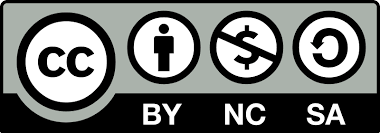Can We Talk about the Existence of Stylistic System?
Teresa Skubalanka
Abstract
The authoress reminds that the grounds for a definition of linguistic system are derived from the theory by F.de Saussure. Latterly, the notional opposition langue-parole is often replaced by the composition code-m essage, (cf P.Ricoeur and others). However, code can’t be completely identified with system. The authoress of the article wonders if the main features of language system have their equivalents in style’s structure. Sbe adduces a thesis of some art theorists that art is „a derivative fonnative system”. It encourages the comparison of a systemic structure of language with a structure of style regarded as one unit of a semiotic nature. The structure of language system consists of perfect linguistic forms, categories and functions.The structure of style includes analo[1]gically stylistic universals, such as codes, categories and functions (constitutive ones, i.e. the constructions, and generating ones, i.e. the accommodations). The codes, i.e. sets of selected units of language (in linguistic style) are arranged according to one-class rows, e.g. the sacral, mythological, biblical, tenninological codes, etc. The constitutive functions, i.e. the constructions, are the figures as well as schemes of genre, narrative patterns, versifications, etc. The generating functions, i.e. the accommodations, have been discussed in the other works by authores. In this article she also deals with a difficult question of stylistic categories, which she defines as „the quantifying semiotic classes". The categories are the property of codes. There are two types of categories: contextual and expressive. These last belong, probably, also to the individual system of the expressive units of language. The general conclusion its: we can talk about the stylistic system only if we mean the abstract structure with its typical constitutive units: the codes, categories and functions.
Authors
Teresa SkubalankaStatistics
Downloads
License

1. Copyrights to published works are held by the University of Opole (to the collective work) and the Authors (to individual parts of the collective work that have an independent meaning).
2. Only previously undistributed works can be published in the scientific journal "Stylistics".
3. The University of Opole does not restrict the possibility of the author's further dissemination of his work on condition that the scientific journal "Stylistics" is indicated as the original place of publication and the consent of the University Publishing House.
4. Consent to the publication of the work in the scientific journal "Stylistics" is tantamount to granting the author a non-exclusive license to the University of Opole, including the right to use the work without territorial restrictions and time limits in the following fields of exploitation:
a) within the scope of recording and multiplication of the work - production of any number of copies of the work in whole or in part using a specified technique, including printing, reprography, magnetic recording and digital technique, introduction of the work into computer memory and computer networks,
b) within the scope of circulation of the original or copies on which the work has been recorded - circulation, lending or hiring of the original or copies,
c) within the scope of dissemination of the work in a manner other than specified in item 2 - making the work or its abstract available on the Internet by enabling the recipients to access the work on-line or enabling them to download the work to their own device that makes it possible to read it, placing the work in electronic databases that disseminate scientific works, including in particular the CEEOL database (Central and Eastern Online Libray) and the abstract in English in the CEJSH database (The Central Europaen Journal of Social Scienes and Humanites).
d) within the scope of creating and distributing dependent works created using the work - using them in the fields of exploitation specified in points 1-3.
5. The author is not entitled to compensation for granting the license to the work.
6. The author agrees that the University may grant further permission to use the work (sublicense) in the fields of exploitation specified in par. 2 paragraph 4.
7. The author agrees that, in connection with the distribution of the work, his or her personal information, that is, name, affiliation, and e-mail address, may be made public.
Most read articles by the same author(s)
- Teresa Skubalanka, Pragmatic conversational markers , Stylistyka: Vol. 25 (2016): Gajda i stylistyka
- TERESA SKUBALANKA, Język graffiti , Stylistyka: Vol. 8 (1999): Styl i gatunek - Стиль и жанр - Style and Genre
- Teresa Skubalanka, Antropomorfizacja w poetyckich opisach przyrody , Stylistyka: Vol. 18 (2009): Styl i kreatywność - Style and Creativity
- Teresa Skubalanka, Language Style of Zbigniew Herbert's Poetry , Stylistyka: Vol. 17 (2008): Znaczenie i styl
- Teresa Skubalanka, Allusion , Stylistyka: Vol. 15 (2006): Styl i kultura
- Teresa Skubalanka, The Character and the Language. Based on the Example of Gustaw from the IVth Part of Adam Mickiewicz’s „Dziady” , Stylistyka: Vol. 7 (1998): Slavic Stylistics
- Teresa Skubalanka, Love Code Elements in the Lyrics of Halina Poświatowska , Stylistyka: Vol. 19 (2010): Style a media
- Teresa Skubalanka, Kategorie stylistyczne , Stylistyka: Vol. 16 (2007): Styl i czas - Style and Time
- Teresa Skubalanka, O gramatyce stylistycznej , Stylistyka: Vol. 21 (2012): Styl narodowy
- Teresa Skubalanka, O kilku problemach stylistyki historycznej , Stylistyka: Vol. 14 (2005): Stylistyka i Kożyna - Stylistics and Kozhina




